Documenting
Slave Voyages
Led by Emory, a massive digital memorial shines new light on one of the most harrowing chapters of human history
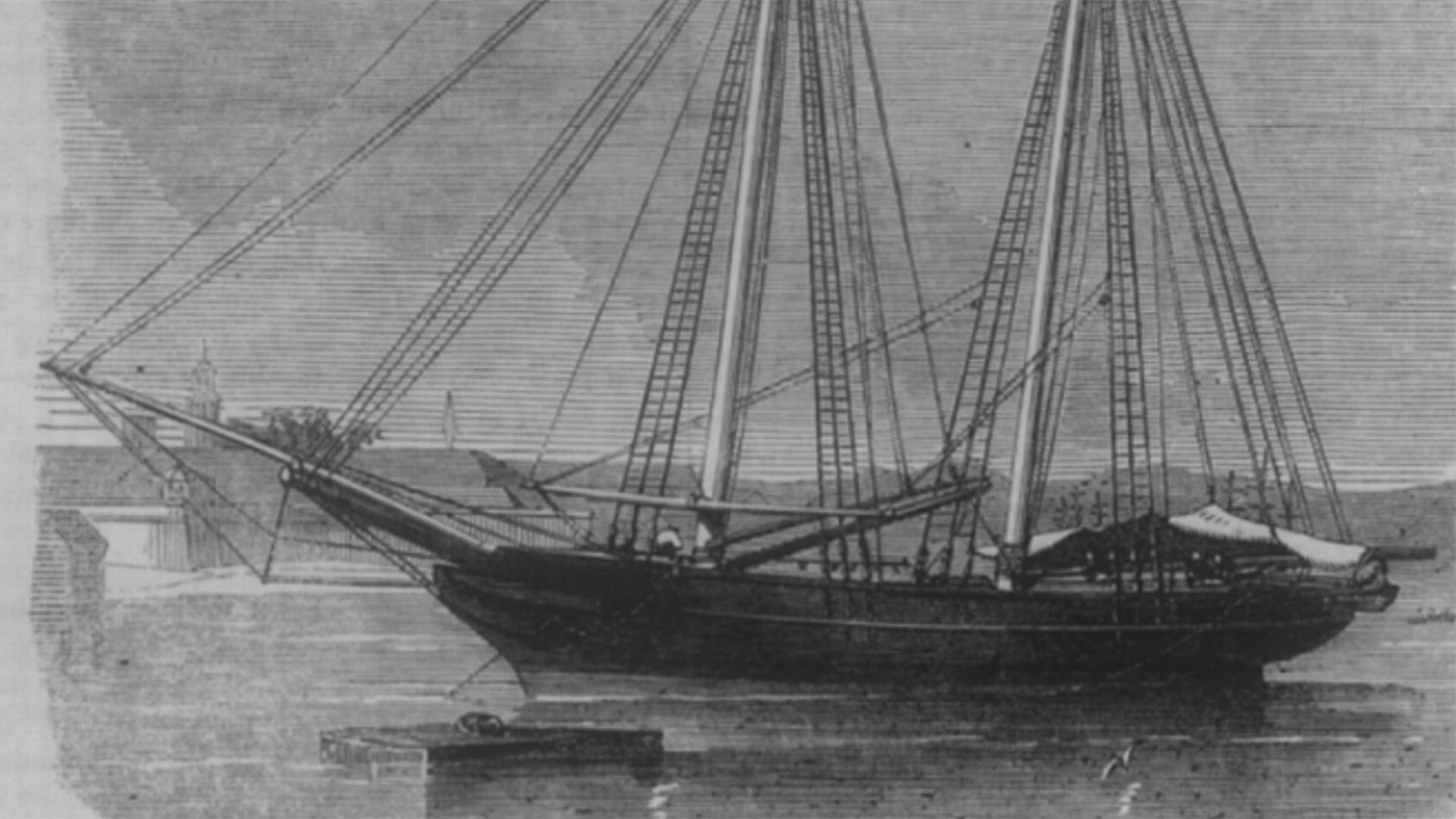
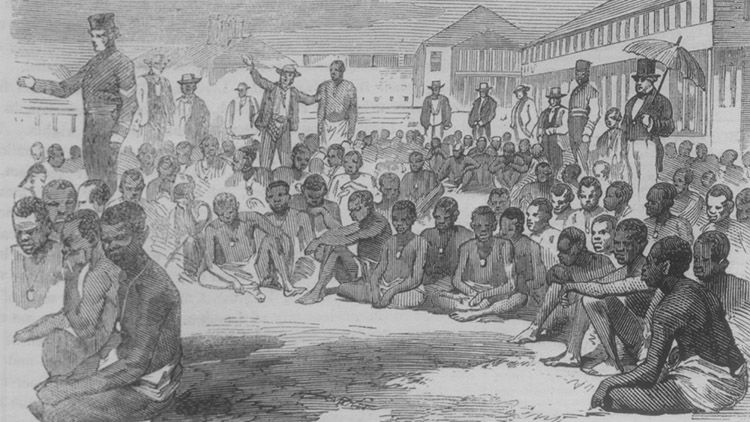
Published in The Illustrated London News on June 20, 1857, this image depicts the capture of the slave ship "Zeldina" and the conditions of the enslaved people who were onboard. Reproduced courtesy Emory's Rose Library.
Published in The Illustrated London News on June 20, 1857, this image depicts the capture of the slave ship "Zeldina" and the conditions of the enslaved people who were onboard. Reproduced courtesy Emory's Rose Library.
For African American families seeking clues to their ancestry, the task is too often stymied by a history that defies documentation.
In fact, the drive toward discovery frequently ends abruptly with the scant record-keeping that surrounds the American slave trade — people kept as property with names simply lost to history.
So when Henry Louis Gates Jr. works with guests on the acclaimed PBS program “Finding Your Roots” whose family stories have been obscured by slavery, he routinely looks for clues in Emory University’s “Slave Voyages: The Transatlantic Slave Trade Database.”
“And it’s a gold mine,” says Gates, director of the Hutchins Center for African and African American Research at Harvard University — an early supporter of the Slave Voyages project — who calls it “one of the most dramatically significant research projects in the history of African studies, African American studies and the history of world slavery itself.”
When the Washington Post recently covered the 400th anniversary of the arrival of the first known enslaved Africans upon “Jamestown’s muddy shores” in colonial Virginia, the article relied upon maps and chart data sourced directly from Emory’s Slave Voyages database to help illustrate a moment that would open centuries of subjugation for millions of people.
And when work began on a new International African American Museum in Charleston, South Carolina, curators knew they could turn to Slave Voyages for definitive data on the slave trade that once ran through the very site of the project, Gadsden’s Wharf — once a point of entry for nearly half of all slaves brought to the U.S.
Ten years ago, when Emory created a website dedicated to data that provided a broader, more complete portrait of the trans-Atlantic slave trade, there was nothing quite like it in the world.
Today, the updated and expanded database has become one of the most utilized resources in the digital humanities.
Recognized as a preeminent resource for the study of slavery across the Atlantic, the project has won acclaim for consolidating data from archival resources across five continents, unifying diverse threads of scholarship, and shining new light upon a harrowing chapter of human history.
“If there were a Pulitzer Prize given for historical databases, the Transatlantic Slave Trade Database would win it, hands down,” says Gates, Alphonse Fletcher University Professor at Harvard.
“It’s the first time in the history of human enslavement that scholars have been able to count the enslaved human beings trapped in the nightmare of human bondage.”

Published in The Illustrated London News on June 20, 1857, this image depicts the capture of the slave ship "Zeldina" and the conditions of the enslaved people who were onboard. Reproduced courtesy Emory's Rose Library.
New website showcases new data
With a focus on advancing public scholarship and collaboration, the newly redesigned site can attract more than 1,000 visitors a day, including educators, scholars, scientists, artists, genealogists and curators with national museums and history centers.
But cataloguing data covering more than three centuries of voyages from Africa to the New World — among the largest slave routes in human history — captured only part of the picture.
Once across the Atlantic, up to 20 percent of enslaved Africans were then dispatched on yet another voyage to their final destinations within the Americas, from Boston to Buenos Aires, even Pacific ports or hundreds of miles inland, especially in Brazil.
Now, with support from the National Endowment of the Humanities, The Andrew W. Mellon Foundation and the United Kingdom’s Arts and Humanities Research Board, a team of international scholars — many with Emory roots — has partnered with Emory’s Center for Digital Scholarship (ECDS) to update and expand slavevoyages.org.
Hear Harvard professor Henry Louis Gates Jr., host/producer of the PBS series “Finding Your Roots," discuss the impact of the redesigned SlaveVoyages.org.
Significantly, the redesign incorporates a trove of new data on the lesser-explored intra-American slave trade, effectively redrawing the map of slavery throughout the Americas and opening staggering new vistas of research.
“The trans-Atlantic slave trade marked the largest long-distance coerced movement of people in history and, prior to the mid-nineteenth century, formed the major demographic well-spring for the re-peopling of the Americas,” notes Emory historian David Eltis, Robert W. Woodruff Professor Emeritus of History and co-director of the Slave Voyages project.
From the late fifteenth century, the Atlantic Ocean became a “commercial highway” that integrated the histories of Africa, Europe and the Americas for the first time. And slavery and the slave trade formed the linchpins of the process, Eltis says.
Visitors to the website can now explore the involvement of the entire Atlantic world in the slave trade, histories of regions, the relationship between slavery and freedom, commercial factors that supported the slave trade, and why it came to an end, he says.
“There isn’t a single port of any size anywhere in the Atlantic that wasn’t connected to the slave trade in some way,” he says. “Now, we can track systematic connections between Africa and the Americas in a way that people have been doing for years between Europe and the Americas.”
Bringing history to life
through big data
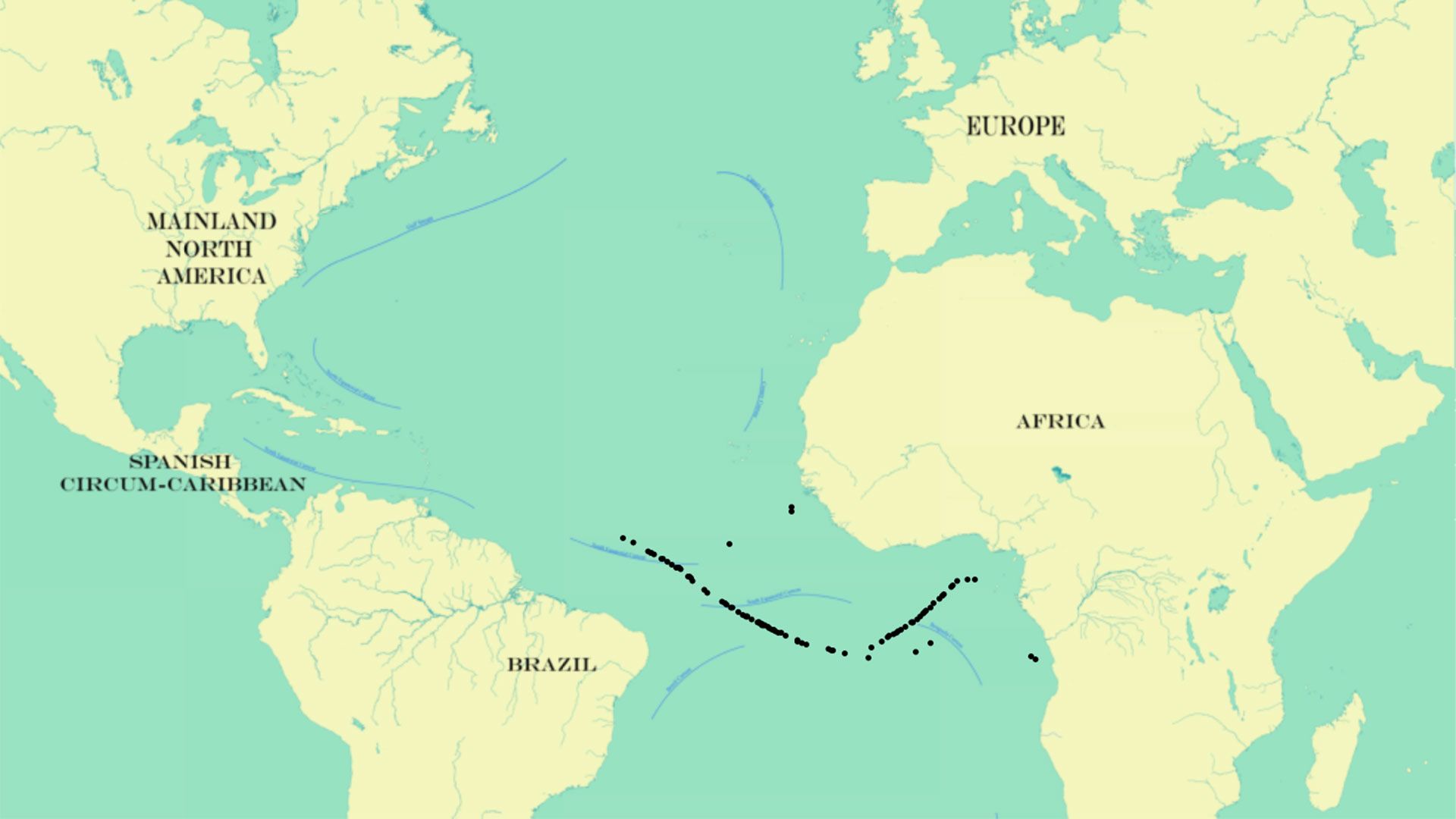
The Slave Voyages site now provides resources detailing more than 36,000 slave trading voyages between Africa and the New World, another 11,400 intra-American voyages from one part of the Americas to another, and data on some 92,000 Africans forced to make those journeys.
A smoother, expanded user experience features even more data about those voyages, identifying specific slave vessels — along with those who sailed them — route maps and timelines, as well as the names of many enslaved Africans.
The result? Consolidated information that reveals patterns and connections once obscured by barriers of language and geography.
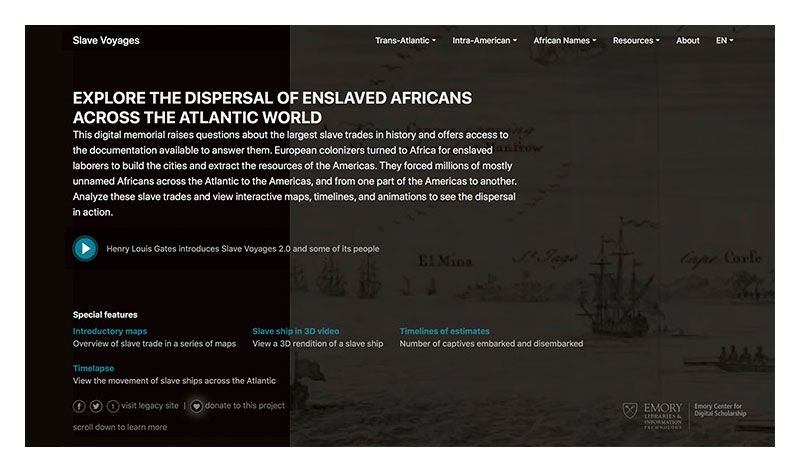
The databases on SlaveVoyages.org are the culmination of several decades of independent and collaborative research by scholars drawing upon data in libraries and archives around the Atlantic world.
Interactive features allow users to analyze a vast volume of data, sample estimates of the slave trade, view videos, maps and 3-D animation, consult research essays and lesson plans, and contribute new discoveries, says Gates, who narrates an introductory video to the site.
Animated maps trace the routes of more than 14,000 slave voyages across the Atlantic in minutes. And a sweeping new 3D video provides both a drone’s-eye-view and a fly-through of the 18th-century slave vessel L’Aurore, reproduced from original architectural plans.
For the first time, visitors can see how enslaved men and women were physically separated, how they were shackled and packed together like cargo to sleep, and explore the cramped, cruel spaces that the ship’s approximately 600 captives had to endure on their two-month passage from Africa to the Caribbean.
In the future, the website will afford an even more complete picture, with expanded biographical data on individuals caught up in the slave trade, both the enslaved and their enslavers. The initiative, People of the Atlantic Slave Trade (PAST), is funded by a grant from The Andrew W. Mellon Foundation.
Features that will add both details and dimension to the story of slavery in the Americas — a history now brought to life through the power of big data.

The databases on SlaveVoyages.org are the culmination of several decades of independent and collaborative research by scholars drawing upon data in libraries and archives around the Atlantic world.
The databases on SlaveVoyages.org are the culmination of several decades of independent and collaborative research by scholars drawing upon data in libraries and archives around the Atlantic world.
Take a 3-D look inside the slave vessel L'Aurore, reconstructed using actual blueprints of the ship. Get a glimpse here, or watch the full video on SlaveVoyages.org.
Take a 3-D look inside the slave vessel L'Aurore, reconstructed using actual blueprints of the ship. Get a glimpse here, or watch the full video on SlaveVoyages.org.
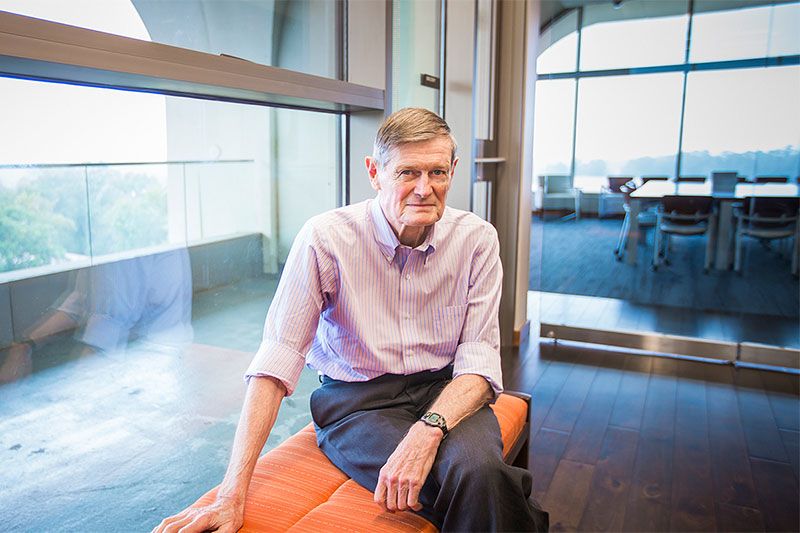
Emory historian David Eltis has overseen the database's transition from punch cards to CD-ROM to today's interactive website.
Emory historian David Eltis has overseen the database's transition from punch cards to CD-ROM to today's interactive website.
The vision behind ‘Slave Voyages’
For years, the vast, collaborative scope of the Slave Voyages project has been nurtured and guided by Eltis, who envisioned a resource rooted in shared scholarship.
In the early 1960s, when he was an undergraduate, slavery was just emerging as an academic discipline, still considered “a fringe topic” among most historians, recalls Eltis.
However, its study would be advanced through the trailblazing scholarship of American historian Philip Curtin, one of the first researchers to estimate the number of enslaved Africans to cross the Atlantic between the 16th and 19th centuries, where they were captured, how many perished during the Middle Passage and where they disembarked.
Though his projections are now considered low by today’s estimates, the work was groundbreaking. It also established what would become the nascent beginning of a database, which Curtin eventually shared with Eltis.
But with voyages that embarked on one continent and ended on another, “there were so many different kinds of records, thousands of miles apart across the Atlantic world,” Eltis recalls.
Development of a single, multi-source dataset was kindled by fate, when Eltis happened to meet historian Stephen Behrendt while waiting in line at the British Public Record Office in 1990. The project was quickly enriched by the collaborative scholarship of historian David Richardson, former director of the Wilberforce Institute for the Study of Slavery and Emancipation at the University of Hull, in Yorkshire, England.

Emory historian David Eltis has overseen the database's transition from punch cards to CD-ROM to today's interactive website.
Over time, the data grew and evolved with advancing technology. Eltis would oversee its migration from punch cards to laptop computer to “The Transatlantic Slave Trade,” a CD-ROM released in 1999 with the backing of a grant from the National Endowment of the Humanities showcasing maps and data on more than 27,000 slave voyages.
But the format carried limitations, and Eltis knew they were missing an important chapter.
“The big hole was the South Atlantic trade,” he acknowledges.
"The trans-Atlantic slave trade was the largest long-distance coerced movement of people in history."
— Emory historian David Eltis
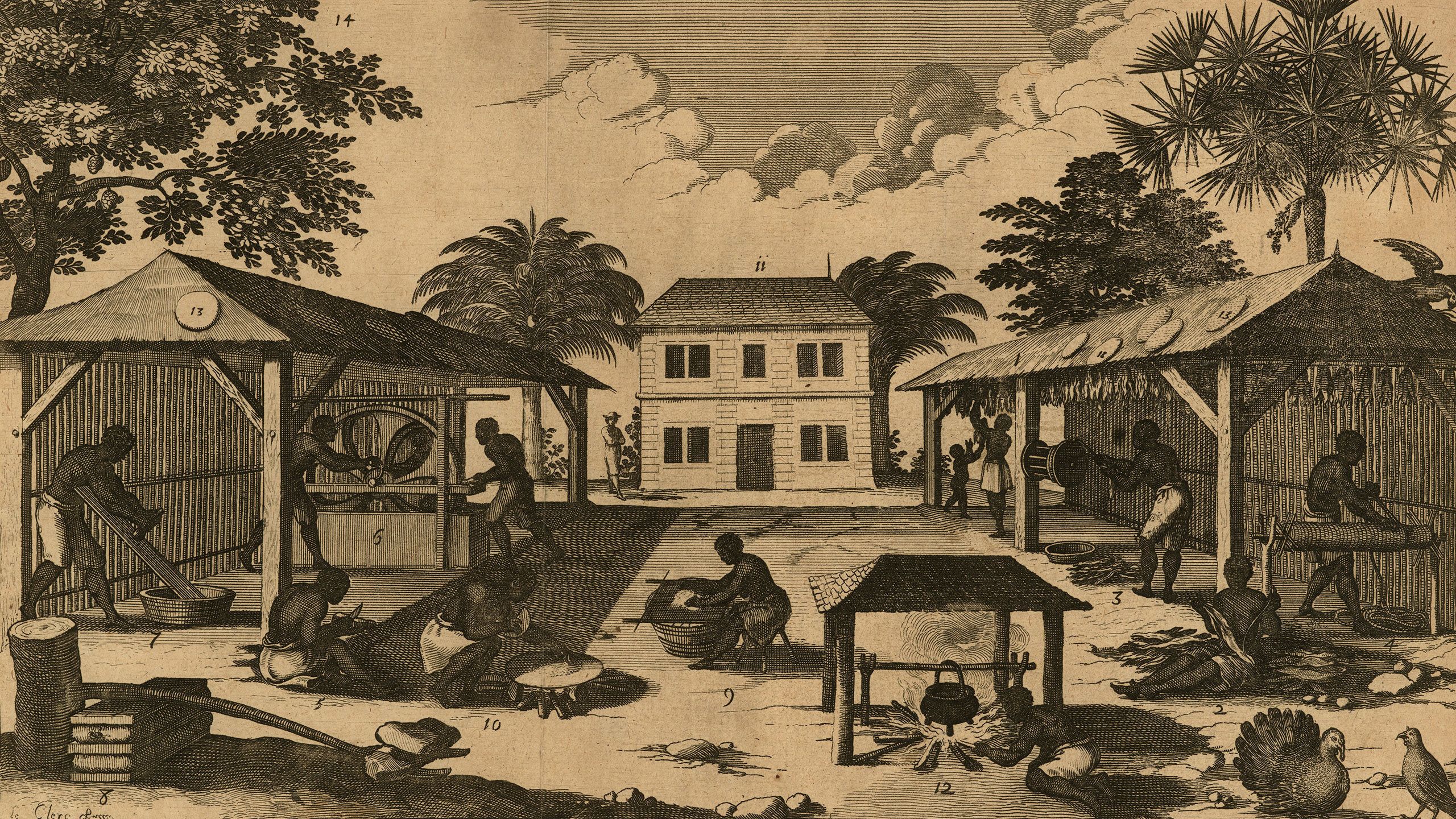
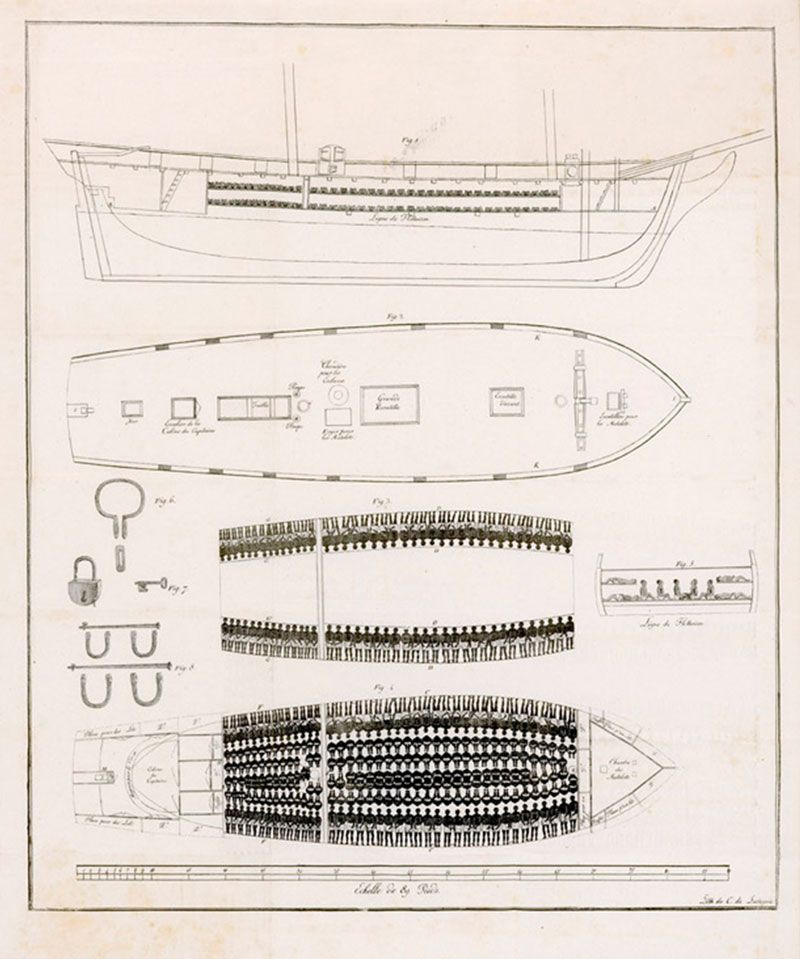
Historical images: The Brig “Vigilante” was a French slaver captured in 1822. She departed from France and carried 345 slaves from the coast of Africa, but she was intercepted by anti-slave trade cruisers before sailing to the Americas and taken to Freetown, Sierra Leone. Learn more about the Viglante on SlaveVoyages.org.
Historical images: The Brig “Vigilante” was a French slaver captured in 1822. She departed from France and carried 345 slaves from the coast of Africa, but she was intercepted by anti-slave trade cruisers before sailing to the Americas and taken to Freetown, Sierra Leone. Learn more about the Viglante on SlaveVoyages.org.
International collaboration
By 2008, the database found a home at Emory as a free, open-access website examining the forced migration of enslaved Africans across the Atlantic world.
From its inception, collaboration has been a hallmark of the project, which encourages researchers to contribute their own new discoveries and correct errors, Eltis says.
For the past five years, for example, Marial Iglesias Utset, a historian of the Cuban slave trade and visiting research scholar at the Afro-Latin American Research Institute at Harvard’s Hutchins Center, has worked closely with Eltis to add the numbers of Africans sent to Cuba, consulting the site almost daily.
In fact, Eltis finds it difficult to identify an international project devoted to preserving and reconstructing history that has been more dependent upon collaboration — a model foundational to future growth.
Across the years, the database has been guided by a multi-disciplinary team of international scholars and historians, librarians, cartographers, computer programmers, designers and digital experts. Now a major digital publishing project, the website is physically tended by ECDS, which manages logistics, coding and technical support.

Historical images: The Brig “Vigilante” was a French slaver captured in 1822. She departed from France and carried 345 slaves from the coast of Africa, but she was intercepted by anti-slave trade cruisers before sailing to the Americas and taken to Freetown, Sierra Leone. Learn more about the Viglante on SlaveVoyages.org.
“This involves some of the newest technology applied to some of the world’s oldest questions and primary sources,” says ECDS Co-Director Allen Tullos, Emory history professor and senior editor of Southern Spaces.
“How did the Spanish, the British and the Dutch engage in larger questions of slavery, forced migration and colonialism? Now you can look at maps, charts and tables that provide a broader picture of history across centuries, making big comparisons across time and space.”
For Tullos and the ECDS team, helping redesign and relaunch the website has been an opportunity “to really contribute to knowledge about some of the worst dimensions of human history, bringing this information forward so it won’t be forgotten.”
Scholars who once studied with David Eltis at Emory have become the next generation of slave trade researchers
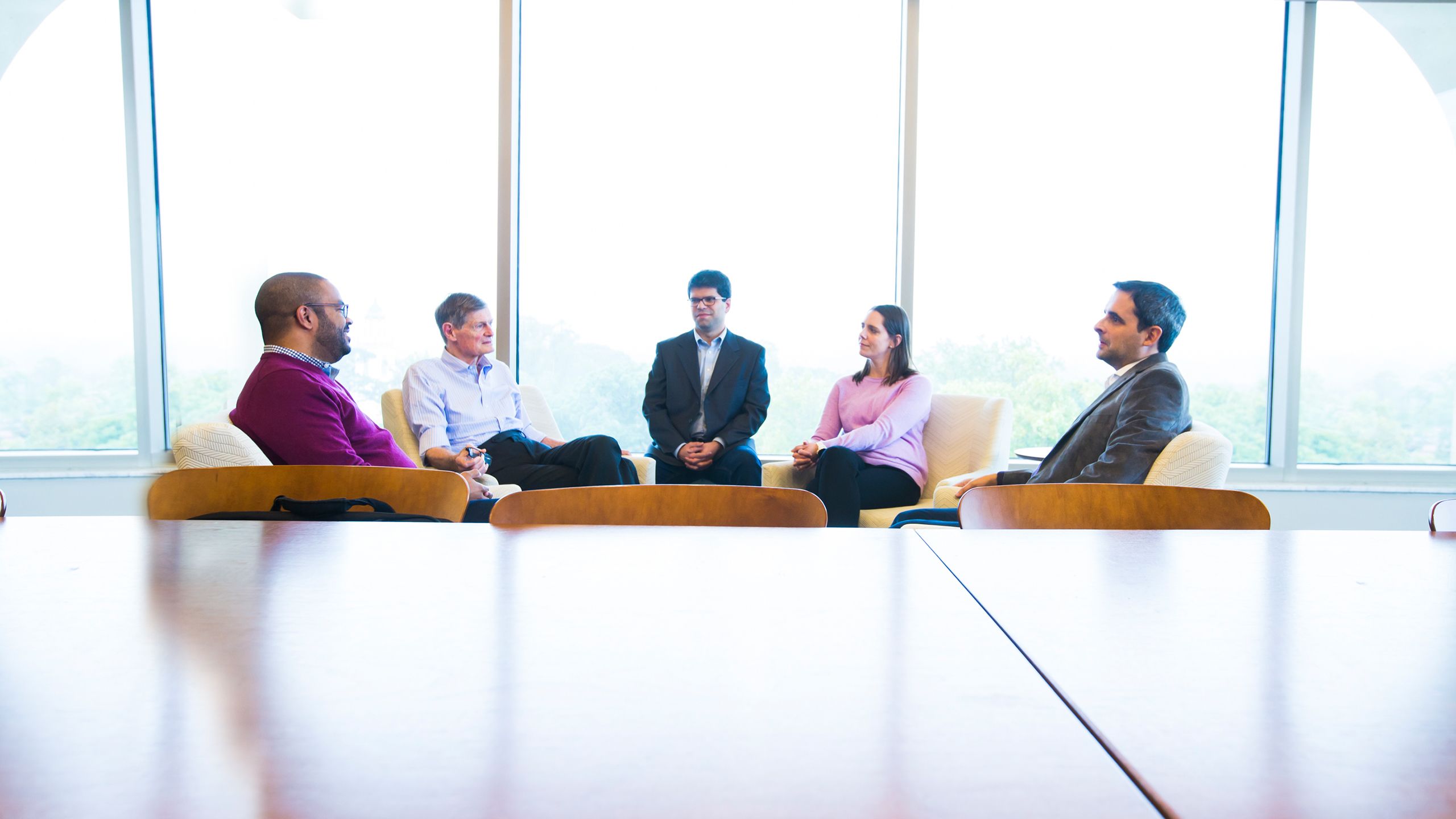
‘A landmark of crowd-sourcing’
Over the past decade, primary responsibility for supporting the site has been shouldered by Emory. But to help ensure sustainability, a new consortium of universities is coming together to help maintain the site, update it and guide it for future generations.
Each Monday, behind-the-scenes collaborators connect across multiple time zones for weekly Skype meetings. Many are alumni of Emory’s Laney Graduate School, PhD students who once studied with Eltis, now emerging as the next generation of slave trade scholars.
“It’s been an amazing example of generosity and collegiality, a passing of the baton,” notes Tullos.
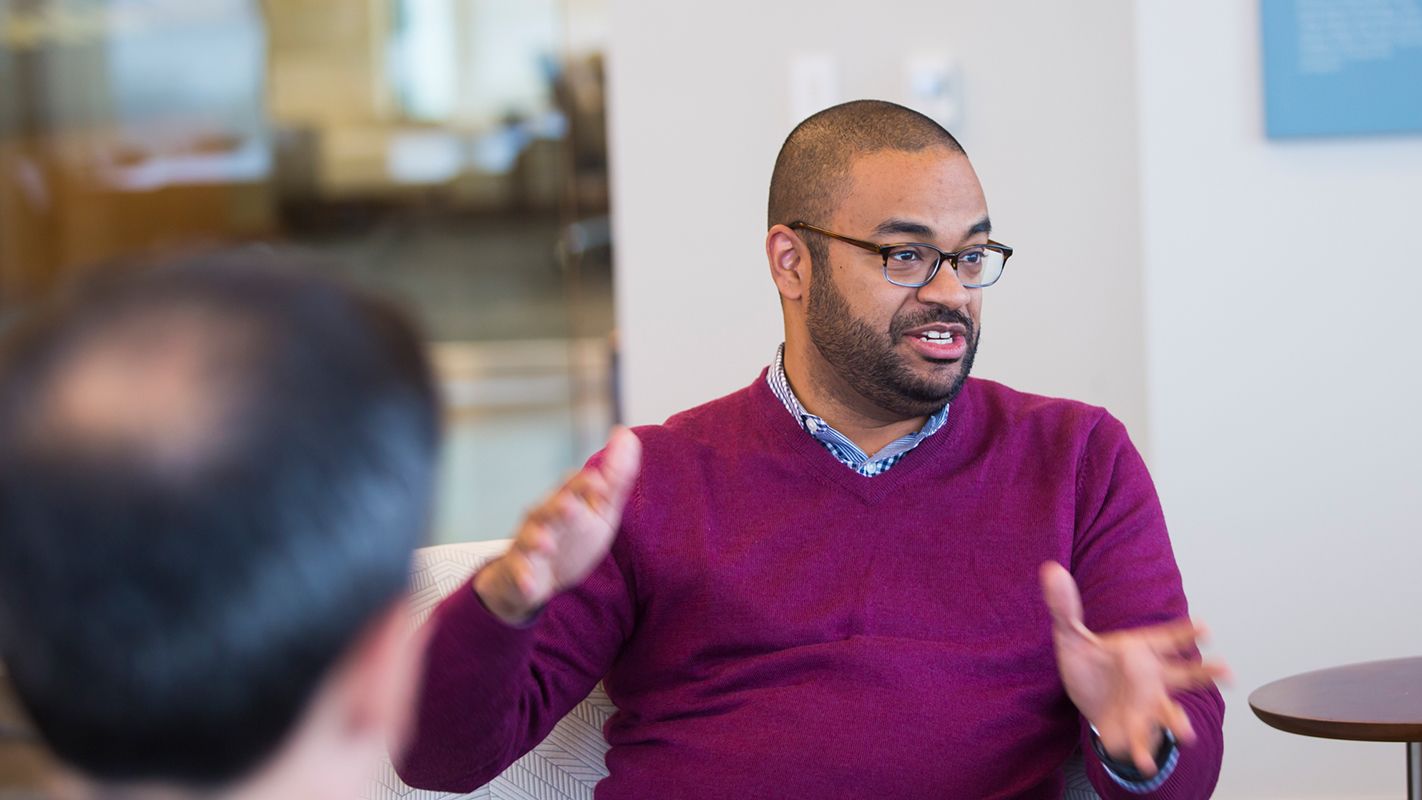
Meet the next generation of scholars: Nafees Khan, an assistant professor of social foundations at Clemson University, holds a PhD in educational studies from Emory.
Take, for example, Nafees Khan, an assistant professor of social foundations at Clemson University who holds a PhD in educational studies from Emory and now serves as the project’s curriculum advisor, helping others teach about slavery.
His work ranges from creating lesson plans for grade school teachers to consulting on the development of the new International African American Museum in Charleston.
“Any time I present this information, the interaction has been meaningful — for many, this is so new,” Khan says. “When it comes to the legacies of race, it’s definitely pushed the conversation.”
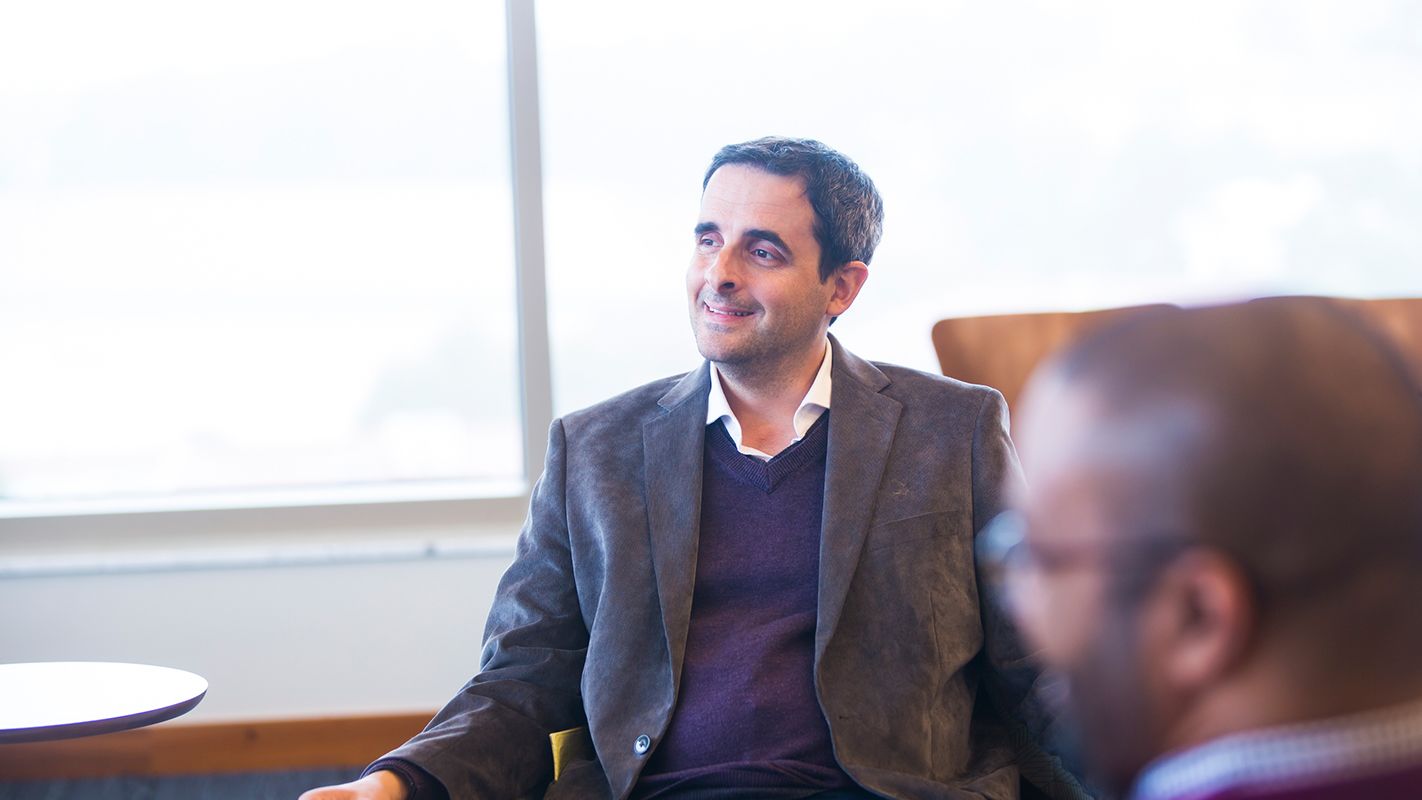
Meet the next generation of scholars: Alex Borucki, who also earned his PhD at Emory, is now associate professor of history at University of California – Irvine.
Much of the new intra-American slave trade data arose from the research of Emory PhD alumnus Alex Borucki, associate professor of history at University of California Irvine, and Greg O’Malley, associate professor of history at University of California Santa Cruz.
“Through the scope of international collaboration, you find yourself working with people from every corner of the world,” Borucki says. “It’s been a landmark of crowd-sourcing and longstanding research collaboration, and also of trust between research teams.”

Meet the next generation of scholars: Emory PhD alumnus Daniel Domingues da Silva is assistant professor of African history at Rice University and a Voyages executive board member.
Since the database was first published, Eltis credits the contributions of more than 50 scholars and researchers. Ongoing discoveries help make the database feel organic, “in the sense that it’s always growing,” says Emory PhD alumnus Daniel Domingues da Silva, assistant professor of African history at Rice University and Voyages executive board member.
Now, Voyages is being replicated, inspiring similar projects around the world.
Gates points to scholarship in England directed by historian Catherine Hall, who is compiling data about the practice of compensating slaves owners — but not enslaved Africans — for the loss of “property” when slavery was abolished in the British colonies in 1833.

Meet the next generation of scholars: Jane Hooper earned her PhD at Emory and is now associate professor of history at George Mason University and a Voyages executive team member.
Or consider the work of Emory PhD alum Jane Hooper, associate professor of history at George Mason University and a Voyages executive team member, who researches the Indian Ocean slave trade, which substantially predates the trans-Atlantic trade and lasted much longer.
Using the Slave Voyages model — scholars working together, sharing data — the International Institute of Social History in Amsterdam is now in talks to create a similar database examining slave trade in the Indian Ocean and maritime Asia.

Meet the next generation of scholars: Nafees Khan, an assistant professor of social foundations at Clemson University, holds a PhD in educational studies from Emory.
Meet the next generation of scholars: Nafees Khan, an assistant professor of social foundations at Clemson University, holds a PhD in educational studies from Emory.

Meet the next generation of scholars: Alex Borucki, who also earned his PhD at Emory, is now associate professor of history at University of California – Irvine.
Meet the next generation of scholars: Alex Borucki, who also earned his PhD at Emory, is now associate professor of history at University of California – Irvine.

Meet the next generation of scholars: Emory PhD alumnus Daniel Domingues da Silva is assistant professor of African history at Rice University and a Voyages executive board member.
Meet the next generation of scholars: Emory PhD alumnus Daniel Domingues da Silva is assistant professor of African history at Rice University and a Voyages executive board member.

Meet the next generation of scholars: Jane Hooper earned her PhD at Emory and is now associate professor of history at George Mason University and a Voyages executive team member.
Meet the next generation of scholars: Jane Hooper earned her PhD at Emory and is now associate professor of history at George Mason University and a Voyages executive team member.
European colonizers turned to Africa for enslaved laborers to build the cities and extract the resources of the Americas, forcing millions of Africans across the Atlantic to the Americas.
— SlaveVoyages.org
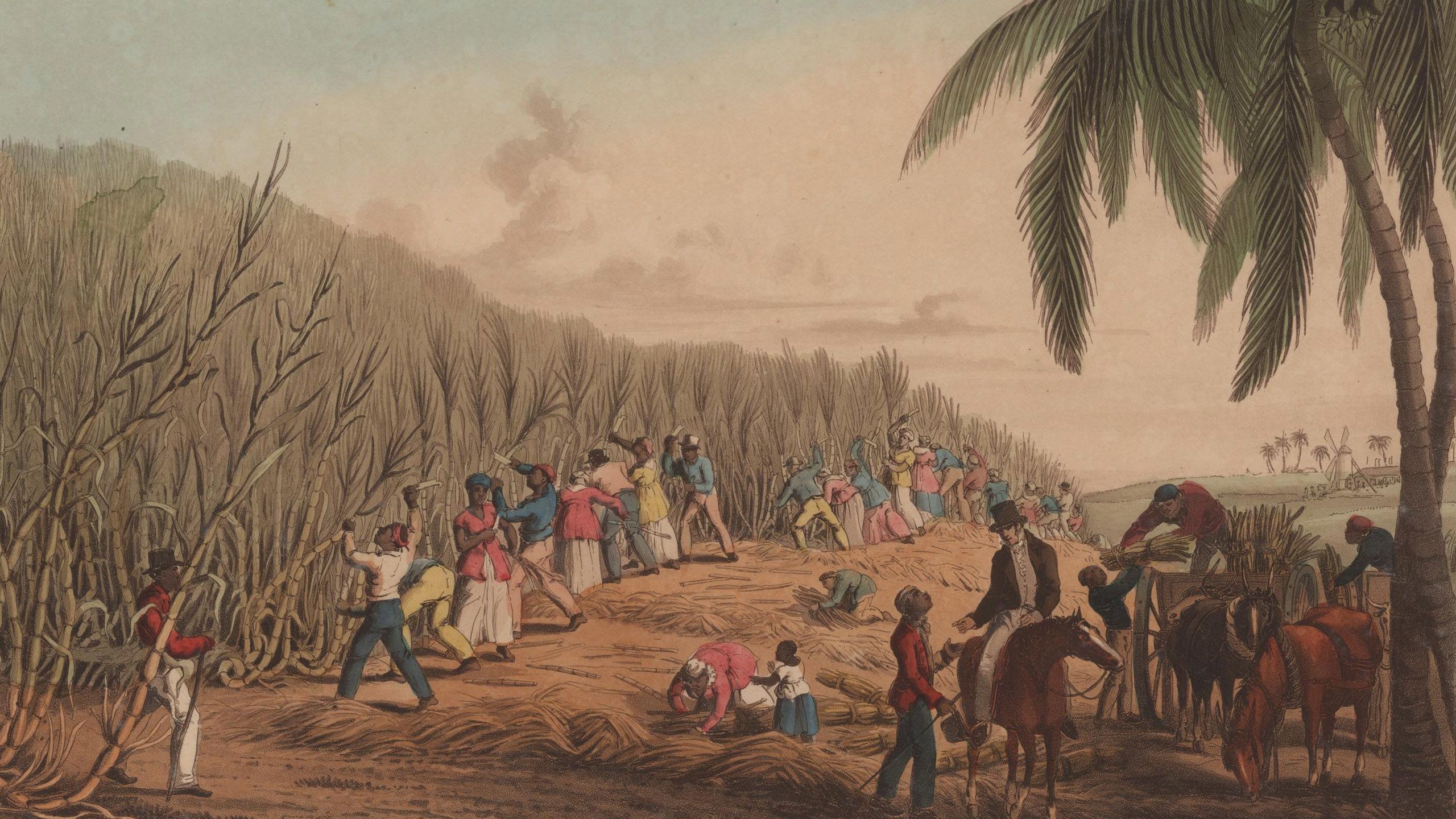
Understanding the scope of the slave trade
Why is it so important to preserve and understand this data?
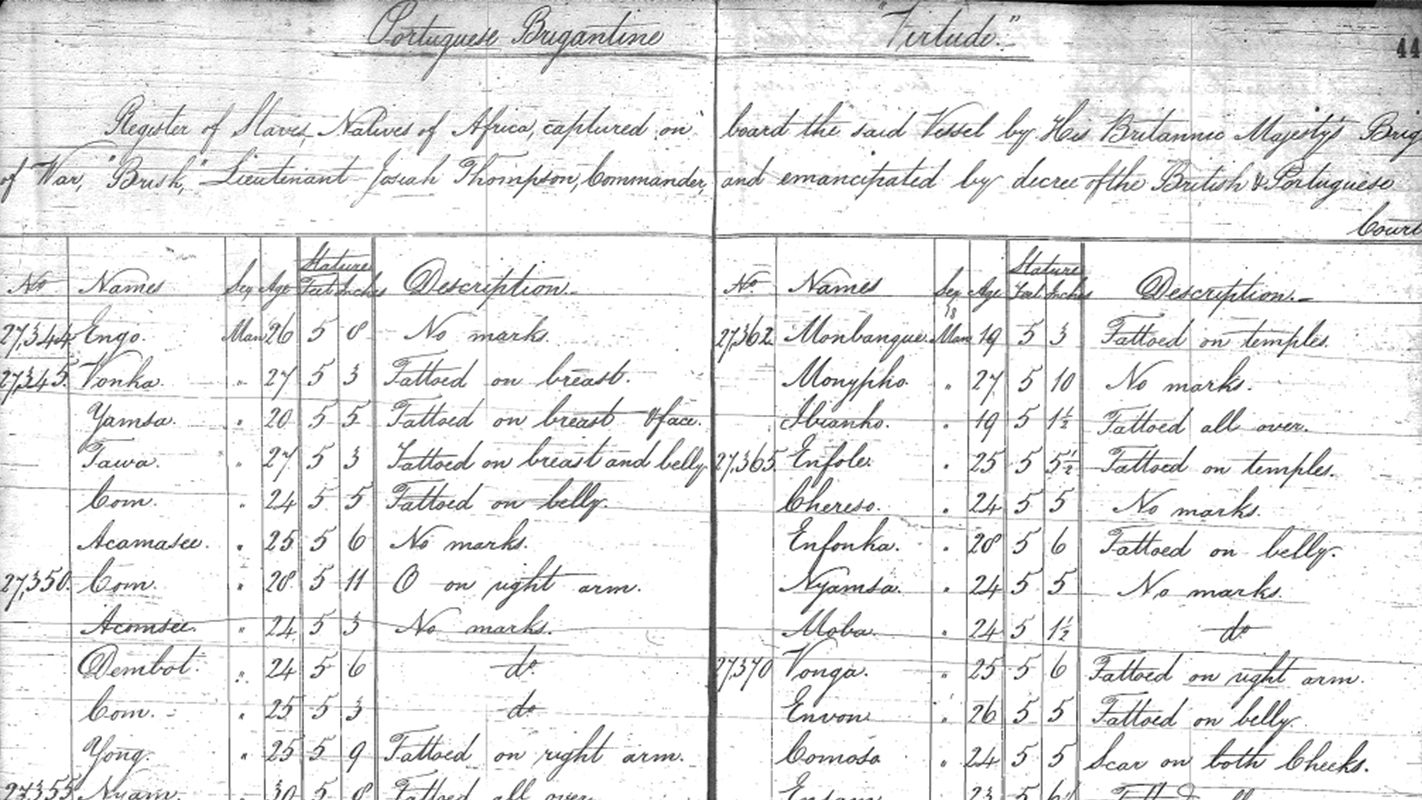
Register from The Brigantine "Virtude": The register was kept as a formal record of emancipation that helped protect people from subsequent re-enslavement. The image is reproduced courtesy of the British National Archives and is one of many catalogued on SlaveVoyages.org.
"The contributions of this website to the self-knowledge of African Americans, not just in the U.S. but throughout the New World, cannot be overestimated," Gates says.
When an African American guest on "Finding Our Roots" receives their African admixture results from DNA testing, which tells them the various regions that their collective black ancestors came from in Africa, his team then compares those results to statistics in the database.
"For example, if a DNA test says 20 percent of their ancestors came from what is now Angola, we then see what ships were coming in to the U.S. from Angola at about the time we estimate their ancestor might have arrived," he explains.
As importantly, it helps enlighten a public that still doesn’t always grasp the massive scope of forced human migration.
“I speak all over the country about genealogy, genetics and the slave trade," Gates says. "My favorite rhetorical device is to ask the audience ‘How many Africans were shipped directly from Africa to the United States?’”
“We know 12.5 million Africans got on the boats, 10.8 million Africans survived the Middle Passage and got off boats throughout the New World,” Gates says.
The guesses roll in: 2 million, 5 million — all wrong.
“The answer is 388,000 — no one can believe it,” he adds. “And we didn’t know this for sure, this surprisingly counter-intuitive fact, until David Eltis and David Richardson compiled the statistics in the Transatlantic Slave Trade Database.”
It’s remarkable, illustrating how much is still misunderstood about the slave trade, “because we as Americans were raised to think that slavery was all about us … In point of fact, Haiti, Cuba and Brazil got many, many more Africans in the slave trade than the United States did,” he says.
Frustrated by reading wildly fluctuating estimates of African captives shipped through the trans-Atlantic slave trade in the New York Times, Gates recently wrote Editor-in-Chief Dean P. Baquet asking him to establish as official policy the authority of the Transatlantic Slave Trade Database’s numbers.
And he agreed, Gates says.
“Now, if you read an article in the Times and it will say that approximately 12.5 million Africans were shipped to the New World, it’s by the authority of Transatlantic Slave Trade Database,” he says. “It’s all because of David (Eltis) and his colleagues.”
ABOUT THIS STORY:
Written by Kimber Williams. Videos courtesy of SlaveVoyages.org and the Emory Center for Digital Scholarship. Historical images courtesy of SlaveVoyages.org. Photos of researchers by Kay Hinton. Design by Elizabeth Hautau Karp and Laura Douglas-Brown.

Register from The Brigantine "Virtude": The register was kept as a formal record of emancipation that helped protect people from subsequent re-enslavement. The image is reproduced courtesy of the British National Archives and is one of many catalogued on SlaveVoyages.org.
Register from The Brigantine "Virtude": The register was kept as a formal record of emancipation that helped protect people from subsequent re-enslavement. The image is reproduced courtesy of the British National Archives and is one of many catalogued on SlaveVoyages.org.
Want to know more?
Please visit the Emory News Center and Emory University.


